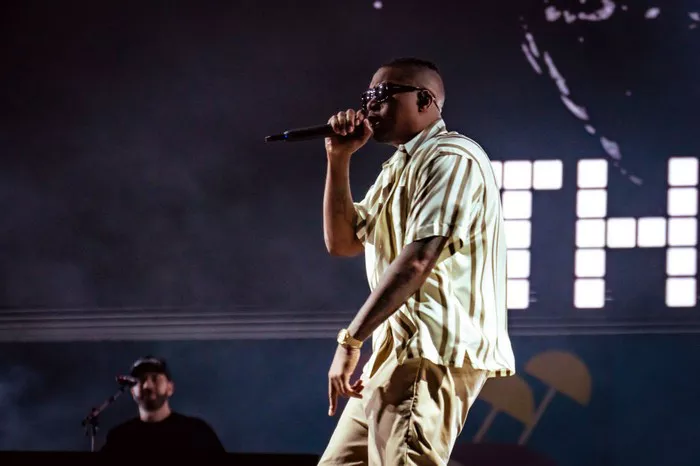Rap music has undergone a remarkable transformation over the decades, evolving from its humble beginnings in the Bronx, New York, to becoming a global cultural phenomenon. This article delves into the dynamic changes that rap music has experienced, highlighting key milestones and shifts that have shaped its trajectory.
The Birth of Rap Music
Rap music, often referred to simply as “rap,” emerged during the early 1970s in the South Bronx. Rooted in African and African-American musical traditions, rap found its voice through spoken word and rhythm. DJs like Kool Herc and Grandmaster Flash played pivotal roles in the inception of rap music. These pioneers used turntables and mixers to create rhythmic beats that served as the backdrop for lyrical expression.
The Pioneering Years of Rap Music
During the late 1970s and early 1980s, rap music began to gain traction beyond the local neighborhoods of its birthplace. The Sugarhill Gang’s 1979 hit, “Rapper’s Delight,” marked a significant milestone as the first rap song to achieve mainstream success. This period saw the emergence of rap groups like Run-DMC and Public Enemy, who helped define the genre’s early sound and style.
Rap Music Goes Mainstream
The 1990s brought rap music to the forefront of the music industry. This decade witnessed the rise of iconic artists such as Tupac Shakur, The Notorious B.I.G., and Dr. Dre. Their contributions to rap music extended beyond the microphone; they became cultural icons whose influence transcended music. Rap music’s mainstream appeal also grew with the release of albums like Dr. Dre’s “The Chronic” and Snoop Dogg’s “Doggystyle,” which introduced West Coast gangsta rap to a wider audience.
The Golden Era of Rap Music
The mid-1990s is often referred to as the “Golden Era” of rap music. During this time, artists like Nas, Wu-Tang Clan, and Jay-Z began to dominate the scene. Lyrics became increasingly introspective and socially conscious, addressing issues such as racism, poverty, and inequality. Rap music was not only entertainment but also a form of storytelling and commentary on societal issues.
The Influence of Technology on Rap Music
The late 1990s and early 2000s brought significant technological advancements that transformed the production and distribution of rap music. The rise of digital audio workstations (DAWs) allowed producers to create beats more efficiently, while the internet facilitated the independent distribution of music. This democratization of the music industry allowed underground rap artists to gain recognition and build fan bases without the need for major record labels.
Diversity and Globalization of Rap Music
Rap music continued to diversify and expand its global reach in the 21st century. Artists from various backgrounds, genders, and ethnicities began to make their mark on the genre. This diversity brought new perspectives and themes to rap music, challenging traditional norms and broadening its appeal. International rap scenes also emerged in countries like France, Japan, and South Korea, proving that rap was a universal language of expression.
The Evolution of Rap Styles
As rap music evolved, so did its subgenres and styles. From the boom bap of the 1990s to the trap and mumble rap of the 2010s, the genre continually reinvented itself. Subgenres like conscious rap, horrorcore, and drill each brought unique themes and sounds to the forefront. The evolution of rap styles reflects the genre’s ability to adapt and remain relevant.
Rap Music as a Platform for Social Commentary
Rap music has consistently served as a platform for social commentary and political activism. Artists like Kendrick Lamar and J. Cole have used their music to address issues such as racial injustice, police brutality, and inequality. Their lyrics have sparked important conversations and contributed to social change, solidifying rap music’s role as a powerful medium for self-expression and advocacy.
The Role of Rap Music in Pop Culture
Rap music’s influence on pop culture cannot be overstated. It has permeated fashion, film, television, and advertising. From the fashion choices of artists like Kanye West to the incorporation of rap tracks in major motion pictures, the genre’s impact is undeniable. Rap music has also birthed a thriving subculture, with elements like graffiti art, breakdancing, and street fashion becoming iconic symbols of hip-hop culture.
Conclusion
As we look to the future, it is clear that rap music will continue to evolve and adapt to the changing cultural landscape. Emerging artists, new technologies, and global collaborations will shape the direction of the genre. Rap’s ability to reflect the experiences and aspirations of its listeners ensures its enduring relevance.
In conclusion, rap music has undergone a remarkable journey from its birth in the South Bronx to becoming a global cultural force. Its evolution has been marked by innovation, diversity, and social relevance. Rap music’s impact on music, culture, and society cannot be overstated, and it will undoubtedly continue to shape the world in the years to come.

